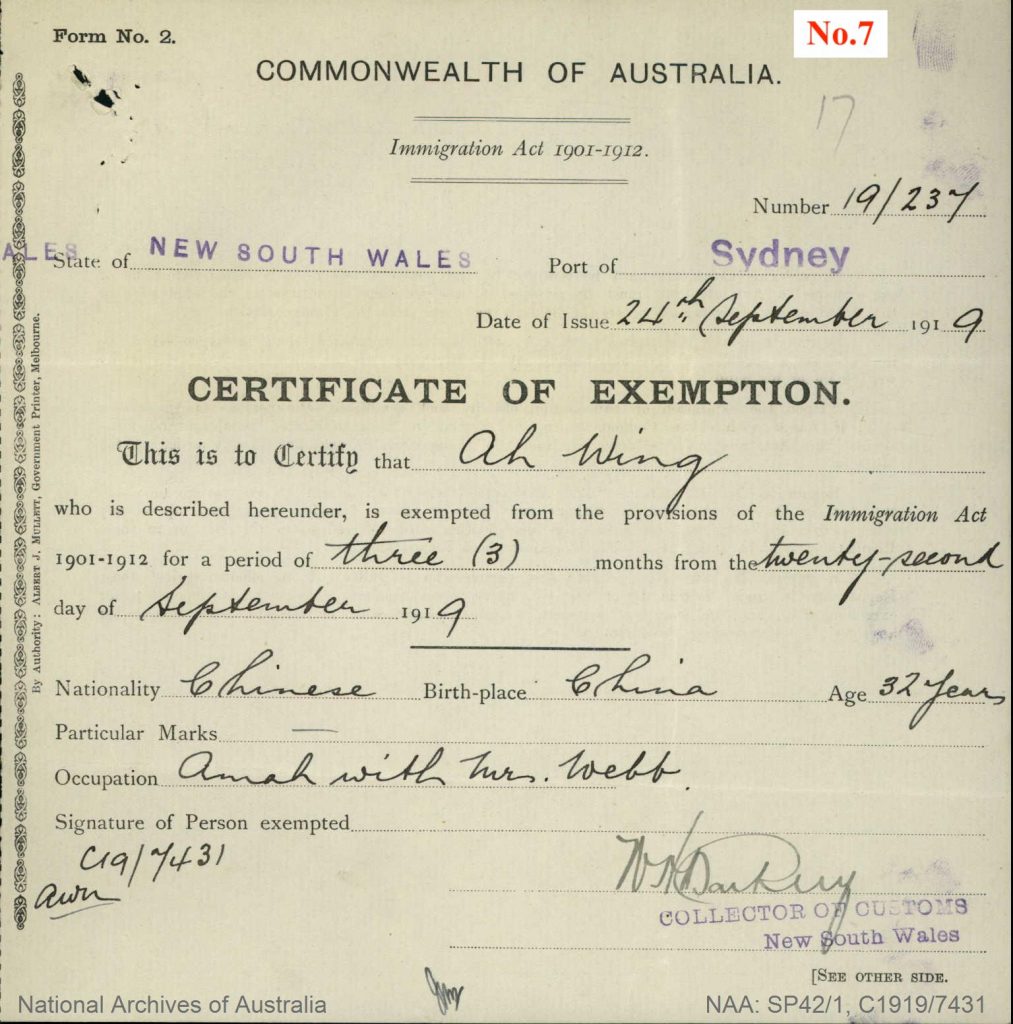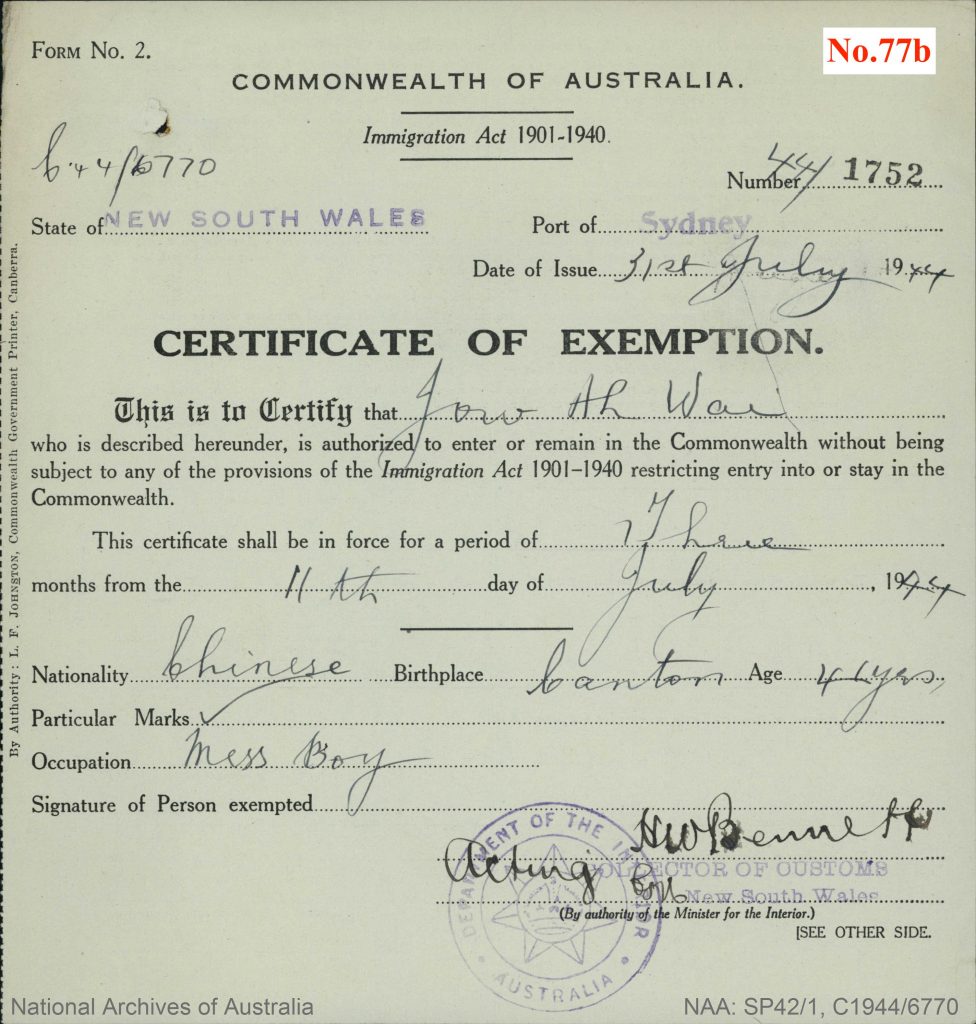
Of the many ‘objects’ that have appeared in this series of 88 have been those associated with the White Australia policy or more especially its legislative arm the Immigration Restriction Act. Most famous and easily identified among these are the ‘Certificate Exempting from Dictation Test’ (CEDT) – see No.1 – and the Dictation Test itself – see No.40. The CEDT was an administrative tool for allowing those already in Australia to remain on some terms, albeit with no right to naturalisation. The second was of course the prime tool for denying entry at all for those deemed ‘undesirable’. But a third tool of the administration is often neglected, partly perhaps due to its confusingly similar title – the Certificate of Exemption.

The ‘exemption’ referred to was of course to the fake dictation test but unlike the CEDT the Certificate of Exemption provided entry on a temporary basis to those who otherwise would be considered undesirable but who for various reasons it was were considered convenient or necessary to be allowed entry to ‘white’ Australia. The range of people who could be granted a Certificate of Exemption was quite wide and gradually expanded overtime. The existence of the Certificate of Exemptions attest to the impossibility of the White Australia fantasy. From its legislative beginning in 1901 all manner of traders, business people, servants, students, entertainers and spouses were among those allowed entry simply as part of Australias existence in the world. In addition, pearl divers, business assistants and substitutes for market gardeners were evidence of the hypocrisy of a policy supposedly based on protecting ‘white’ workers that gave preference, again from the beginning, to cheaper workers. Some of these exemptions were also based on the idea of the holder doing a ‘Chinese’ occupation. In some cases this may have even been the case, such as Chinese typesetters for Chinese language newspapers or cooks in Chinese cafes (see see No.28).
Aside from supporting various industries with cheap imported labour the main impact of the Certificate of Exemption was that its ‘temporary’ nature could and often was manipulated into extension after extension until a person eventually achieved a form of permanent residence or even citizenship when such became possible in the 1950s. Between 1902 and 1946, over 6,400 people entered Australia on temporary Certificates of Exemption.[1] An estimate of how many on these certificates were able to remain in Australia is that 3,500 had done so by 1947; although 1,228 were relatively recent, having arrived within the previous four years.[2] This would mean that roughly about one in three people who came on a Certificate of Exemption were able to remain in Australia permanently.
Perhaps one of the most successful examples of this conversion to permanency was Yuk Kwan (Ken Wong) who arrived in Australia on a temporary Certificate of Exemption in 1921. He was originally employed as a typesetter for a Sydney Chinese language newspaper and did not leave Australia again until his honeymoon in 1963 as an Australian citizen. During that period Yuk Kwan was often threatened with deportation as his jobs disappeared or were denied him due to his Chinese background. Yuk Kwan fought these moves in courts and newspapers, and was eventually certified to be Ken Wong ‘a good sort’ who lives in the suburbs and drinks beer, enabling him to take out Australian citizenship.
See also: White Australia policy survivors
See here for more detail on: Yat Kwan/Ken Wong
[1] Figures from, Barry York, Admitted: 1901 to 1946. Immigrants and Others Allowed into Australia between 1901 and 1946, Centre for Immigration & Multicultural Studies, Australian National University, 1993, throughout.
[2] C. Y. Choi, Chinese Migration and Settlement in Australia, Sydney University Press, Sydney, 1975, p.42.

